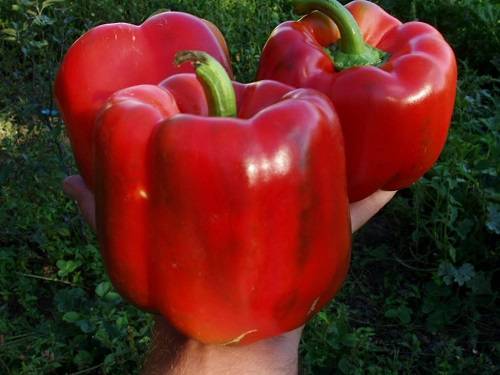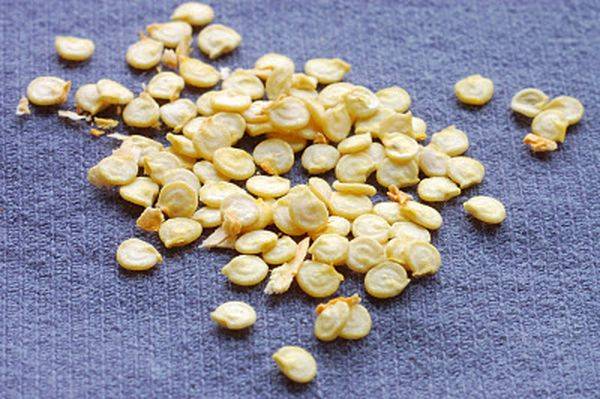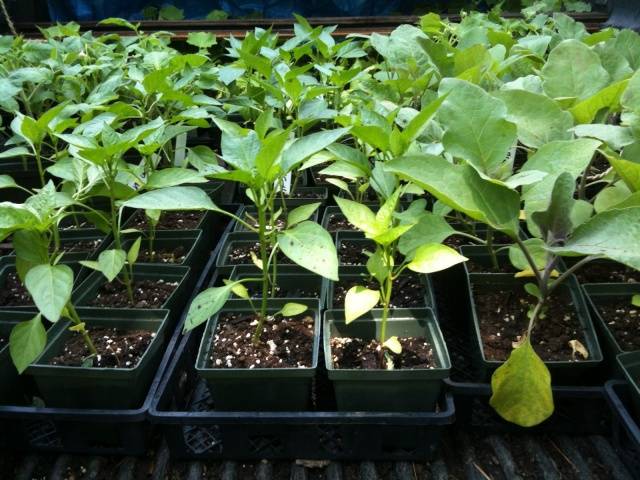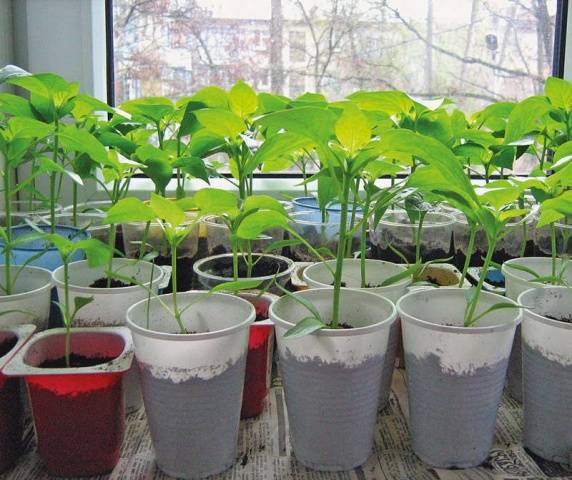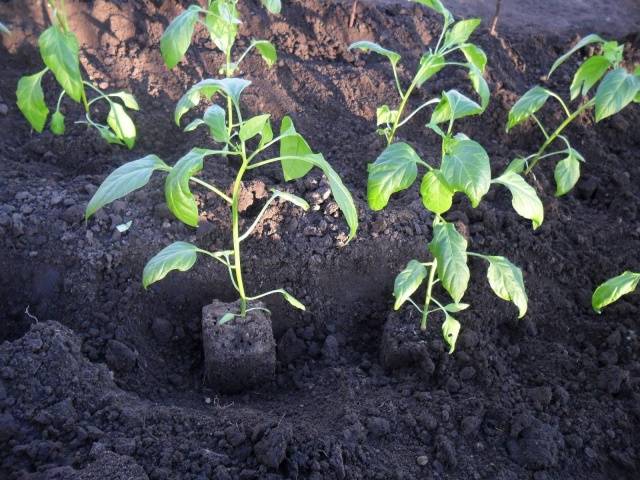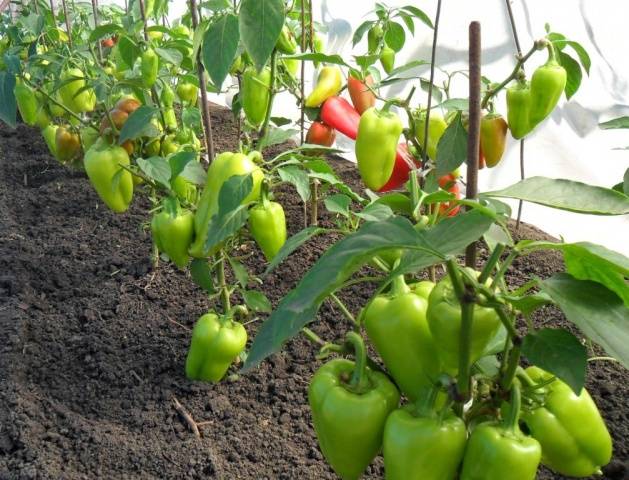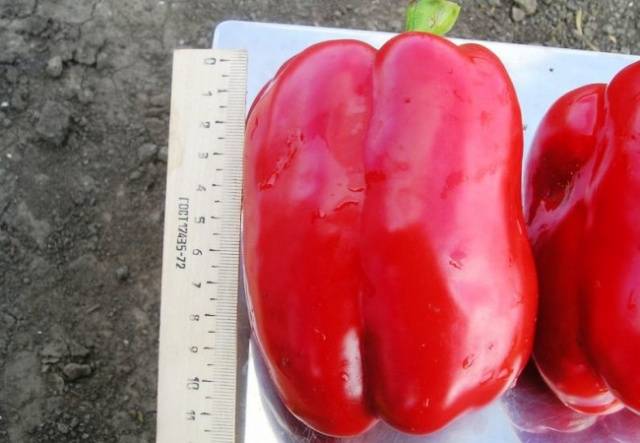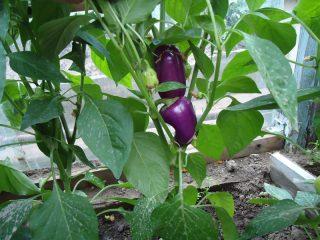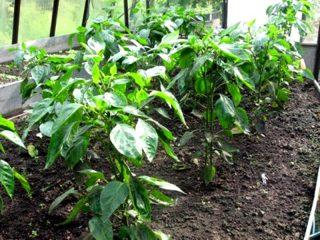Content
Pepper Hercules is a hybrid variety produced by French breeders. The variety gives a high yield and is distinguished by long-term fruiting. The hybrid is planted in open beds in the southern regions. In other climatic conditions, planting is carried out in a greenhouse.
Description of the variety
Description of pepper Hercules F1:
- mid-early ripening;
- bush height 75-80 cm;
- fruiting 70-75 days after the transfer of seedlings;
- yield per bush from 2 to 3.5 kg.
Characteristics of the fruit varieties Hercules F1:
- cuboid shape;
- average weight 250 g, maximum - 300 g;
- wall thickness up to 1 cm;
- fruit length - 11 cm;
- as it ripens, it changes color from green to dark red;
- very sweet taste even with green fruits.
Hercules fruits are suitable for fresh consumption, freezing and processing. Due to its good presentation, the variety is grown for sale.
Peppers can be harvested when they are technically mature. Then its shelf life is 2 months. If the fruits have already turned red on the bushes, then after harvesting they need to be processed as soon as possible.
Seedling peppers
The Hercules variety is grown by the seedling method. The seeds are germinated at home. Before starting work, prepare the soil and planting material. When the pepper grows up, it is transferred to a permanent place in an open area, in a greenhouse or greenhouse.
Preparing for landing
Hercules seeds are planted in March or February. They are pre-wrapped in a damp cloth and kept warm for a couple of days. This treatment stimulates the emergence of sprouts.
If the seeds have a bright colored shell, then they are not processed before planting. Such planting material has a nutritious shell, due to which the seedlings develop faster.
The soil for planting varieties Hercules is prepared from the following components:
- humus - 2 parts;
- coarse river sand - 1 part;
- land from the site - 1 part;
- wood ash - 2 tbsp. l.
The resulting soil is heated for 15 minutes in a microwave or oven. Boxes or individual cups are prepared for seedlings. One option is to use peat pots.
If you grow Hercules peppers in boxes, then when 1-2 leaves appear, it must be dived into separate containers. The culture does not tolerate such changes in conditions, so picking should be avoided whenever possible.
The crops are watered and the containers are placed under glass or film. Seed germination occurs at temperatures above 20 degrees. The emerging seedlings are transferred to the window.
Seedling conditions
Seedlings of the Hercules variety provide certain conditions:
- temperature regime (in the daytime - no more than 26 degrees, at night - about 12 degrees);
- moderate soil moisture;
- regular watering with warm, settled water;
- airing the room;
- lack of drafts;
- increased air humidity due to spraying.
Before transferring the plants to a permanent place, they are fed twice with Agricola fertilizer or Fertika... A break of 2 weeks is taken between treatments.
Young plants need hardening 2 weeks before planting. They are transferred to a balcony or loggia, first for several hours, then this interval is gradually increased. Then the transplant will bring less stress to the peppers.
Planting peppers
The Hercules variety is planted in open areas, hotbeds or greenhouses. The transplant is carried out at the end of May, when the air temperature rises to 15 degrees.
Pepper prefers light soils with low acidity. The preparation of the beds is carried out in the fall, when the soil is dug up, they are applied to 1 sq. m rotted manure (5 kg), double superphosphate (25 g) and potassium sulfate (50 g).
The place for growing the Hercules variety is chosen depending on the culture that previously grew on it. Good precursors for peppers are courgettes, cucumbers, onions, pumpkin, and carrots.
It is not recommended to plant if any varieties of peppers, eggplants, potatoes, tomatoes have previously grown in the garden. These crops have common diseases that can be transferred to new plantings.
The order of planting peppers Hercules:
- Preparation of holes 15 cm deep.
- The holes are placed in increments of 40 cm. 40 cm are also left between the rows.
- Add 1 tbsp to each pit. l. complex fertilizer, including potassium, phosphorus and nitrogen.
- The plants are moved into the pits along with the earthen clod.
- The roots of the peppers are covered with earth, which is lightly tamped.
- Plants are watered abundantly.
After transplanting, the peppers need about 10 days to adapt. During this period, no moisture or fertilizer is applied.
Care scheme
According to reviews, Hercules F1 pepper reacts positively to watering and feeding. The care of the variety also includes loosening, mulching the soil with humus, and forming a bush.
The Hercules variety is formed into 1 stem when planted in open areas. If the plants are planted in a greenhouse or greenhouse, then 2 stems are left. In peppers, side shoots are eliminated.
Watering plantings
It is enough to water the peppers every week before flowering. When fruiting, the plants are watered twice a week. Each bush requires 3 liters of water.
During the formation of fruits, the intensity of watering is increased up to 2 times a week. To stimulate the ripening of the fruits of the Hercules variety, watering is stopped 10-14 days before harvest.
The Hercules variety is watered from a watering can at the root. Moisture is taken from barrels when it has settled and warmed up. Exposure to cold water is stressful for plants. For watering, choose the evening or morning period.
Top dressing of peppers
Regular feeding of F1 Hercules pepper stimulates its development and fruit formation. During the season, the plants are treated by spraying and fertilizing at the root.
After planting the plants, the first feeding is performed on the basis of a solution of urea (10 g) and double superphosphate (3 g) per 10 liters of water. 1 liter of the resulting fertilizer is applied under the plants.
During flowering, Hercules F1 peppers are fed with boric acid (4 g per 2 L of water). The solution stimulates fruit formation and prevents the ovaries from falling off. Fertilizer is applied by spraying. When you add 200 g of sugar to the solution, the flowers of the peppers will attract pollinating insects.
Re-feeding the Hercules variety with phosphorus and potassium is performed during the ripening period of the peppers. Plants are watered at the root.
Protection against diseases and pests
The Hercules variety is not susceptible to a number of diseases:
- bacterial spotting;
- tobamovirus;
- tobacco mosaic;
- late blight.
Viral diseases are the most dangerous for peppers. To combat them, the affected plants are destroyed and the crop planting site is changed.
Fungal diseases spread in thickened plantings with high humidity. They can be dealt with with the help of the drugs Fundazol, Oksikhom, Akara, Zaslon. If the product contains copper compounds, then the treatment is carried out before flowering and after harvesting the fruits.
The Hercules variety is attacked by pests that feed on their cell sap, roots and leaves. The insecticides Keltan or Karbofos are effective against insects, which are used according to the instructions. From folk remedies use infusion of onion peel, tobacco dust, wood ash.
Gardeners reviews
Conclusion
According to the description, the Hercules F1 pepper differs in amicable ripening of fruits, sweet taste and high commercial qualities. The variety is resistant to diseases, but requires constant watering and feeding when growing. The fruits of the variety have universal application, they are suitable for making soups, side dishes, salads, snacks and homemade preparations.
